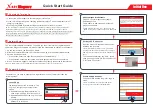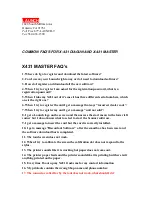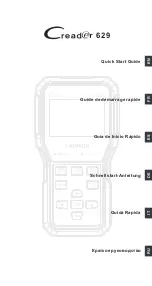Lexicon
300 V3.0 Owner's Manual
6-2
Using time code
The 300 utilizes time code to trigger Setup and Effect changes. It can also use
time code to trigger parameter glides. In order for any of the time code functions
to work, a time code source must be plugged into the Time Code Input on the
300 rear panel.
Time code is an electronic signal applied to tape or film which identifies each
individual video frame. The ability to uniquely identify any frame provides a
reference system for fast and accurate location of any point on the tape. This
referencing system maintains its accuracy regardless of changes in playback or
editing equipment, allowing precise synchronization of an entire editing system.
Time code identifies each video frame by assigning it a unique “address”.
Frames are sequentially identified by hour, minute, second, and frame. For
example, a typical timecode address appears as:
09 : 42 : 31 : 07
hours minutes seconds frames
As each frame is advanced, the time code address is increased by one frame
“count”. Because the time code signal is locked to advancing video frames, both
advance at exactly the same rate.
In the USA, there are two standard frame rates, one for black and white
(monochrome) and one for color.
Monochromatic video runs at a rate of 30 frames per second. If a black and white
TV program is measured by time code, the program length, time code display,
and clock time will all be in synchronization. Color video signals run at a rate of
29.97 frames per second, and clocking a one-hour color program at 30 frames
per second will result in a time discrepancy of 3.6 seconds (or 108 frames). In
order to correct this discrepancy, a version of time code called SMPTE Drop
Frame was developed.
SMPTE Drop Frame Time Code, as its name implies, eliminates frame ad-
dresses from the Time Code each hour to allow matching of time code and clock
time. Specifically, frame addresses .00 and .01 are eliminated at the end of every
minute in an hour, except for minutes: 00,10,20,30,40 and 50. For example,
00.00.59.29 advances to the number 00.01.00.02. In Drop Frame mode, the
frame numbers .00 and .01 do not exist, except for minutes 00, 10, 20, 30,
40 and 50. Since Drop Frame time code eliminates only frame addresses, the
actual video is unaffected. Color video frames continue to progress at the rate
of 29.97 per second. Any calculations of program length based on Drop Frame
time code will, therefore, agree with standard clock time.
The 300 reads time code in the following formats:
SMPTE Standard time code, compatible with a monochromatic frame rate of 30
frames per second
SMPTE Standard Drop Frame time code, compatible with a color frame rate of
29.97 frames per second
Compatible with the European broadcast standard frame rate of 25 frames per
second
Compatible with frame rates of 24 frames per second.
SMPTE NON-DROP
SMPTE DROP FRAME
EBU
FILM
Summary of Contents for 300
Page 1: ...300 Digital Effects System V 3 0 Owner s Manual ...
Page 6: ......
Page 9: ......
Page 10: ...1 1 Installing the 300 1 Installing the 300 ...
Page 21: ...2 1 System Overview 2 System Overview ...
Page 30: ...3 1 System Operation 3 System Operation ...
Page 57: ...4 1 The Algorithms and their Parameters 4 The Algorithms and their Parameters ...
Page 93: ...5 1 The Presets 5 The Presets ...
Page 129: ...6 1 Time Code Operation 6 Time Code Operation ...
Page 139: ...7 1 MIDI Operation 7 MIDI Operation ...
Page 147: ...8 1 Troubleshooting 8 Troubleshooting ...


















